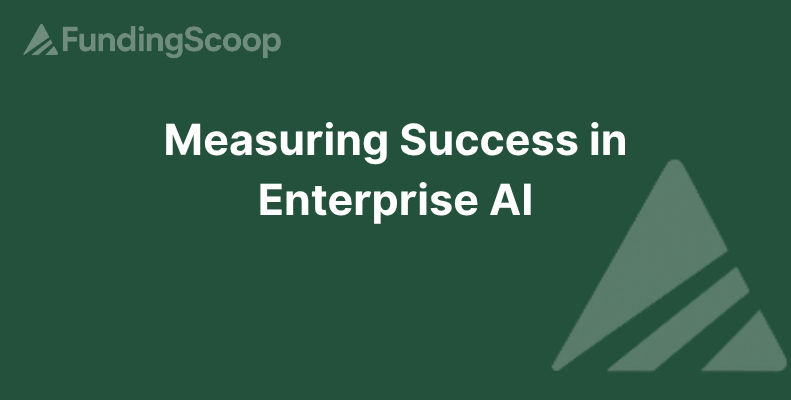
Measuring Success in Enterprise AI
Nina Domingo
Enterprise AI promises significant transformation for organizations, but measuring its success requires understanding relevant metrics. Focusing solely on cost efficiency may be misleading; instead, choose metrics reflecting your strategic priorities. Success varies across companies, highlighting the importance of a comprehensive approach to AI metrics. Both qualitative and quantitative insights should be balanced, with strategies tailored to specific business contexts. Ultimately, success in AI requires aligning metrics with broader business goals and embracing the nuanced challenges and trade-offs involved.
Let's talk about enterprise AI for a second—it's transforming organisations everywhere, promising efficiency, growth, and a competitive edge. But here's the thing: how do you actually measure its success? Many companies jump on the AI bandwagon without a clear strategy for evaluation, leaving them in a potential lurch when it comes to justifying budgets or refining tactics.
The Metrics That Matter
When it comes to AI, not all metrics are created equal. Some argue that focusing strictly on cost efficiency can mislead businesses about their true AI prowess. According to a UK Government analysis, AI's impact is multifaceted, intertwining with cyber security and data handling efficiency. As I often tell founders, 'Your brand voice isn't something you create in a workshop—it's something you discover by being honest about who you are and who you're not.' This wisdom applies to AI too: what you choose to measure should reflect your strategic priorities, not just industry trends.
Success Stories and Real-World Issues
There's no one-size-fits-all when it comes to AI success. For some UK companies, the key metric might be market penetration, while for others, it might be operational efficiency or even staff satisfaction with new AI tools. A comprehensive study highlights that a broad approach—accepting the complexity and interconnectedness of AI metrics—provides better insights. In my experience covering numerous launches, I've noticed the startups that thrive often do so by acknowledging this complexity rather than simplifying it for convenience.
Balancing the Benefits and Challenges
Here's where it gets interesting: enterprise AI isn't just about implementing new technology; it's about transforming business processes and mindsets. I've seen successful founders take completely different approaches—some focus on tight performance metrics, while others lean towards broad, qualitative measures assessing team satisfaction or innovation culture. The reality is more nuanced than headlines suggest, and AI implementation often involves trade-offs. What I'm noticing is that those who articulate and understand these trade-offs upfront tend to tailor their strategies to the specific contexts of their businesses.
My Take
Nina's take: "Implementation is only step one in AI success. A nuanced understanding of key performance indicators, balanced with qualitative insights, is fundamental." Plot twist: both quantitative and qualitative metrics have their place. What succeeds in one context can utterly flop in another. And honestly? There's merit to both sides.
In my conversations with founders, I've heard a variety of strategies—some thrive on granularity, others on broader strokes. I always encourage reflecting on whether your metrics genuinely reflect your business objectives or are simply ticking industry boxes.
Conclusion
So, how do you measure success in something as dynamic and powerful as enterprise AI? The key lies in balancing ambition with realistic, tailored metrics. Whether you're tracking competitive advantage, operational efficiency, or employee engagement, remember: what's important is understanding the bigger picture and tailoring your metrics to that. As AI continues to evolve, the conversation around measurement remains critical. How is your business navigating this AI-driven frontier?


